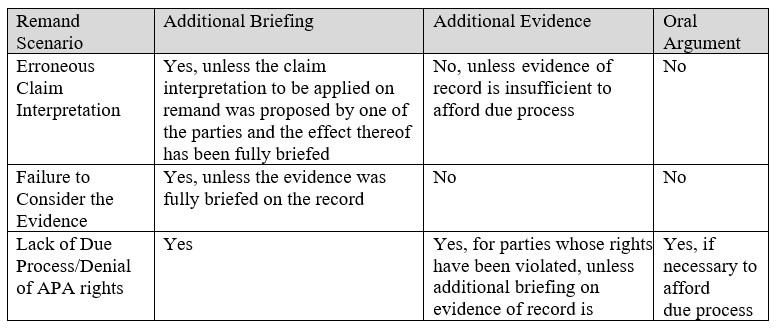The Court of Appeals for the Federal Circuit (Federal Circuit), the reviewing court for the decisions issued by the Patent Trial and Appeal Board (Board), has handled over 1,000 appeals from the Board on patent trials authorized by the America Invents Act (AIA). The Federal Circuit has affirmed the vast majority of the cases which have reached a final determination. A few Board decisions have been reversed, and some decisions have been vacated and remanded from the Federal Circuit back to the Board for additional consideration.
Up to now, the remand process has been uncertain for practitioners because the Patent Trial and Appeal Board Practice Guide and the rules governing the Board proceedings did not address remands. While low, the number of remands has been increasing, and practitioners are consequently seeking more guidance about how the Board would address the remands. The Board has issued Standard Operating Procedure 9 (SOP 9) to guide panels in handling remands from the Federal Circuit and to guide practitioners about what to expect from a Board panel on remand.
New SOP 9 addresses these and other remand issues that have occurred over the past several years. By issuing SOP 9, the Board is showing that it wants to standardize the process for handling remands to ensure greater consistency among remanded proceedings. SOP 9 specifically addresses the following:
- The Board has set a goal of issuing remand decisions within six months of the Federal Circuit's mandate.
- Panels will now meet with the Chief, Deputy Chief or their delegates (i.e., one of the Vice Chief Judges) to discuss the remanded case and issues presented therein.
- The Board has set forth default procedures for trials and appeals regarding whether further briefing, evidence or oral hearings are warranted in an individual case and whether prosecution will be reopened.
Appendix 2 of SOP 9 provides guidance to the parties and considerations for determining the scope of remand, including under what circumstances additional briefing, additional evidence or another oral argument would be permitted. A short summary of some common remand scenarios is provided in the table below.

Clearly the procedures outlined by SOP 9 suggest that the Board will not allow an extensive reopening of the record in most circumstances. Rather, the Board's response to the remand will be governed by the type of deficiency identified by the Federal Circuit and the implications of the noted issue for the particular record. Practitioners before the Board should keep these guidelines in mind when a decision from the Federal Circuit is remanded to the Board.
In a larger sense, the issuance of SOP 9 shows a natural maturation of the Board practice and, consistent with other attempts by the Patent Office, an effort to ensure that post-grant procedures enabled by the AIA provide just, speedy and inexpensive adjudication of the issues presented to the Board.

